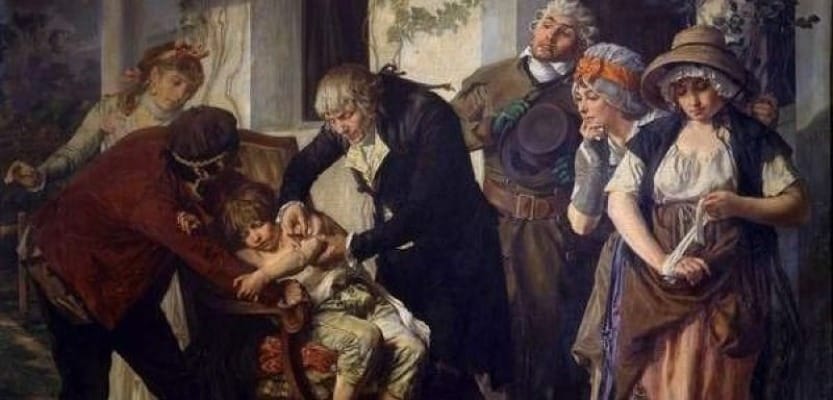on edward jenner and creativity

One common question that’s on everyone’s minds as we fiercely scrub our hands, pool our resources, conserve our consumption, stock up (but not hoard), invent calculus or write King Lear is: when will this end? Nobody knows what the answer to that question is but we are all in agreement that it could be in the faraway promise land of vaccines.
Although vaccination now is a common method to provide long-term protection against a disease, it was unheard of until about 200 years ago. The word “vaccination” was added to our vocabulary when an Englishman named Edward Jenner came along and performed an unfathomable experiment. Using matter from a young dairymaid’s lesions who had been infected with cowpox, he inoculated an 8-year-old boy, who then developed an immunity to smallpox: a disease that had ravaged humankind for over 12,000 years. Despite many controversies, Jenner’s stunning achievement made him a scientific celebrity. Even Napoleon, Britain’s mortal enemy, had his troops vaccinated before taking the field. “Ah, Jenner,” he supposedly said after freeing two English prisoners at his request, “Ah, it is Jenner, I cannot refuse Jenner anything!”
We’ve all read about how smallpox was humankind’s greatest scourges of all time. The disease brought down at least three empires. Generations watched helplessly as their children succumbed to the disease or were disfigured or blinded by it. Attempts made to contain it were met with very little success. Knowing this led to a nagging question in my mind: what was it about this man’s creativity that generations before him had failed to see?
If you were to study Jenner, it becomes clear that he saw the world with childish curiosity. Although he was a trained physician, he was fascinated with animals and he would constantly tinker, trying to understand their worlds better. He studied hibernation in hedgehogs, distemper in dogs, hydatids in the brain of sheep and migration in birds. His work in studying the habits of the cuckoo even earned him a position in the Royal Society.
As Howard Gardner remarked in his study of the major creative geniuses — the paradoxical traits of playfulness and discipline, or responsibility and irresponsibility, can go hand in hand with deepest insights. Jenner was the perfect example. However, creativity cannot be fully understood just by looking at the person who appears to make it happen. According to Mihaly Csikszentmihalyi, a world-renowned psychologist, creativity with a capital C, the kind that brings about a cultural change, can be understood by looking at the interaction of three elements: a cultural domain, a person that brings novelty into that domain and a field of experts who recognize and validate the innovation.
Jenner was thirteen when he heard a dairymaid say “I shall never have smallpox for I have had cowpox. I shall never have an ugly pockmarked face”. This belief was part of common lore. 30 years before Jenner conducted his experiment, it was now common knowledge that survivors of cowpox became immune to smallpox. In fact, Jenner wasn’t even the first person to perform the vaccination. There’s growing recognition that a farmer named Benjamin Jesty was the first person in history to vaccinate his wife and kids from the udders of a cow that was infected with cowpox.
While he did not discover vaccination, Jenner was the first one to confer scientific status on the procedure and was the instigator of its popularization. What Jenner had that the farmer didn’t, was knowing the rules of a scientific domain to validate the idea and access to a receptive audience.
There are several consequences of adapting this system model of thinking about creativity. For one, this shows that a person cannot be creative in a domain to which he or she is not exposed. No matter how enormous mathematical gifts a child may have, she will not be able to contribute to mathematics without learning its rules. But even if the rules are learned, creativity cannot be manifested in the absence of a field that recognizes and legitimizes the novel contributions. A child might possibly learn mathematics on his or her own by finding the right books and the right mentors but cannot make a difference in the domain unless recognized by teachers and journal editors who will witness to the appropriateness of the contribution.
But perhaps the most important implication of the systems model is recognizing the fact that creativity cannot be separated from its recognition. The level of creativity in a given place at a given time does not depend only on the amount of individual creativity. It depends just as much on how well suited the respective domains and fields are to the recognition and diffusion of novel ideas. This can make a great deal of practical difference to efforts for enhancing creativity. Perhaps this really means that to be truly creative, you don’t need some sort of divine madness. All you really need is just to persevere.